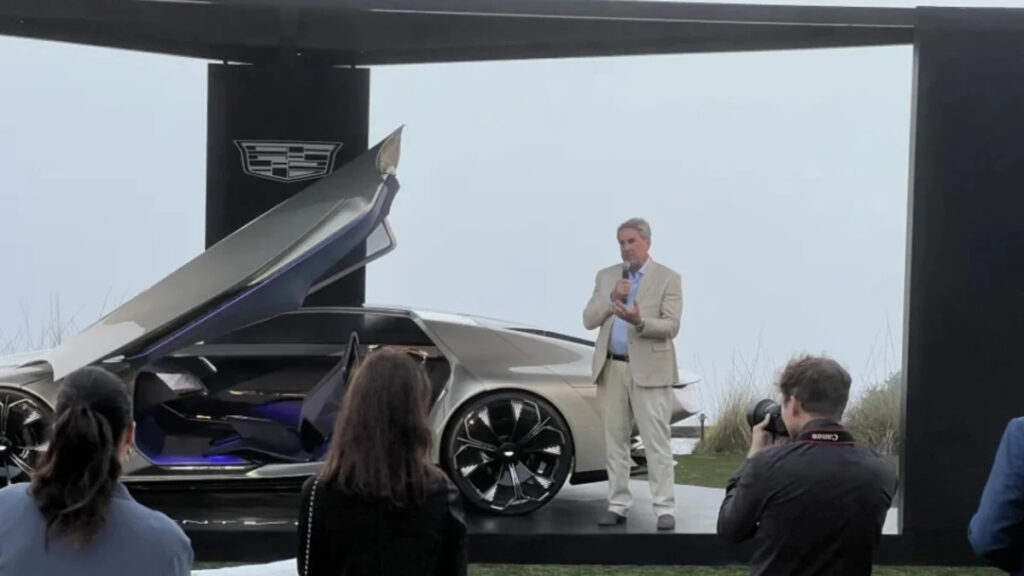GM's Mark Reuss talks Cadillac's EV game plan and the return of the Corvette ZR1

MONTEREY, Calif. — Mark Reuss has a unique vantage point from his perch at General Motors (GM). Reuss, GM’s president since 2019 and a 34-year GM employee, has his hands in all GM brands, including Cadillac, Chevrolet, and Buick. He’s in charge of everything from global research and development to manufacturing and electric vehicle initiatives, such as battery strategy and development.
He’s also an avid motorsports and track driver who has seen GM push deeper on the racetrack with programs through Chevrolet and Cadillac. Reuss joined Yahoo Finance for a conversation at Monterey Car Week, where Cadillac unveiled its latest creation: the Opulent Velocity concept car that not only showcases the next stage of Cadillac’s EV expansion but also marks the 20th anniversary of the brand’s foray into motor sports, which Reuss spearheaded.
Here is an edited excerpt from the interview.
GM President Mark Reuss from an event showing off the new Cadillac Opulent Velocity concept (credit: Pras Subramanian)
Pras Subramanian
Pras Subramanian: Monterey Car Week is an important event for Cadillac, with plenty of high-end customers and clients milling about looking to see the company’s vision. Is the Opulent Velocity a vision of Cadillac’s future?
Mark Reuss: You know, if you think back to the Celestiq [Cadillac’s $300,000 EV sedan], when we showed it for the first time, it was a concept car and people were like, ‘Wow, you should make that. That’s really a statement. It’s something that would really set Cadillac apart.’ And, of course, we were going to make it, and we tried it out.
But if you think about that, we’re looking over the horizon at the future of Cadillac and what that design language was going to be. And if you look at our product portfolio, we’ve taken that language from the front to the rear to the really progressive design of Celestiq into all of our products. And it’s time to take a step back again and use this car to look over the horizon and look at technology, performance, and elegance and what Cadillac is going to become. So you’ll see some of these things, maybe quite a bit of them, come into the portfolio as we go forward.
Cadillac’s electrification strategy has seen a pivot, where 2030 was supposed to be the target for full electrification. Now Cadillac is sort of saying, ‘We’re going to have options for people for all kinds of powertrains.’ Is that the strategy?
Absolutely. We’ve always said, we have a really good inherent advantage on our manufacturing capacity and footprint where we can actually do both, and we can let the market really tell us what they want and when they want it.
And so that’s what we’re doing. And, you know, Lyriq is off to a great start; it’s sort of the No. 2 luxury EV in the world. And we’re doing close to 3,000 [in sales] a month, which is fantastic, and we’re doing that because it’s a fantastic car.
You also noted that GM’s EV sales are growing, up 40% from a year ago in Q2. Let’s talk about the overall auto market in the U.S. and GM’s positioning. How is the market looking right now for that consumer, both at the higher end and down market?
Well, General Motors has been known for basically our whole company’s history of making different things for different people of all income levels, of all interests. It’s kind of America, right? And we do that for everybody. So it’s everything from the [Chevy] Trax to the [Buick] Envista, the Celestiq to all those things, and we’re really proud of that. And so I don’t think that changes.
The market outlook itself — we’re right around [a 16 million annual run rate, or total number of cars sold in the US] here, plus or minus, going into the next year, I think. So maybe 16.2 million, 16.3 million. We’ll see.
But we’re [nearing full capacity] for that, and we’ll make those decisions, but we will not overproduce the vehicles. In fact, we’re running the lowest incentives of anybody in the industry, and that’s because of our product strength.
So people really want what we have; we charge a fair price, and so we’re not out there incentivizing things.
One more item while we have you. The new Corvette ZR1 has been on display here at Monterey in a few locations. I know you played a big part in making that program happen. What did you have to do to push your engineers, push your people, to take this car to level it needs to be to be called a ZR1?
I think it starts with doing a mid-engine car. We’ve got the best people in the world, and that’s a big advantage. So when we started off architecting the Stingray [current generation C8 Corvette], we architected the car to carry the batteries for the E-Ray [hybrid]. We architected the car to carry the 67-millimeter twin turbos on [ZR1’s] Gemini engine.
The front-engine car [prior generation C7], it had to be supercharged because we could not package those turbochargers. So those are things that we had to do on the ZR1.
When you start opening the architecture and the aperture up, people get really creative and they get really excited, and we’re just blessed to have those people in our company.
Pras Subramanian is a reporter for Yahoo Finance. You can follow him on Twitter and on Instagram.
Click here for the latest stock market news and in-depth analysis, including events that move stocks
Read the latest financial and business news from Yahoo Finance







